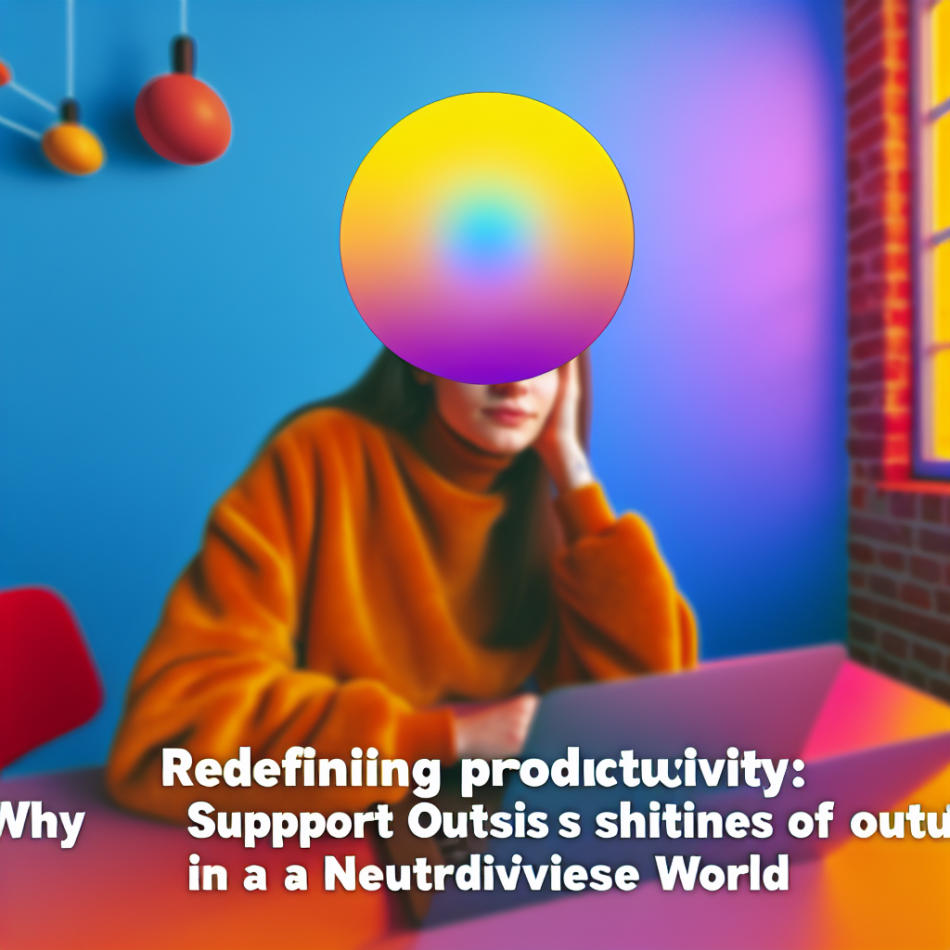Rethinking Productivity: When Support Outshines Output
In a world fixated on metrics and efficiency, the traditional definition of productivity—measuring output per hour—feels increasingly outdated. What if true performance isn’t just about ticking boxes but about fostering environments where diverse minds thrive? This article explores why redefining productivity requires embracing neurodiversity, prioritising support systems, and recognising that how we work matters as much as what we achieve.
Redefining Productivity in a Neurodiverse World
Productivity has long been synonymous with speed, consistency, and uniformity. Yet, this one-size-fits-all approach ignores the reality that cognitive diversity—whether due to ADHD, autism, dyslexia, or simply unique thinking styles—shapes how individuals process tasks. For some, hyperfocus drives results in bursts; for others, collaborative brainstorming unlocks creativity. Measuring everyone against the same benchmark not only undermines potential but perpetuates burnout.
To reframe productivity, start by asking: What barriers hinder people from working effectively? Flexible schedules, noise-cancelling headphones, or task autonomy might matter more than rigid deadlines. A neuroinclusive approach values outcomes over hours logged, acknowledging that “efficiency” looks different across brains.
The Myth of the “Ideal Worker” and Its Hidden Costs
The “ideal worker” myth—a perpetually focused, extroverted, and fast-paced individual—is a relic of industrial-era thinking. It overlooks introverts who excel in deep work, neurodivergent professionals who innovate through nonlinear thinking, and those who manage chronic conditions while delivering high-quality results. Companies clinging to this archetype risk alienating talent and stifling innovation.
Consider the cost of presenteeism: employees physically present but mentally disengaged due to unsupportive environments. By contrast, teams that personalise workflows report higher retention and creativity. For instance, allowing asynchronous communication can empower those overwhelmed by real-time meetings, while visual task managers might aid dyslexic employees better than text-heavy briefs.
Building Support Systems That Enable, Not Restrict
Support isn’t a perk—it’s the foundation of sustainable productivity. This begins with psychological safety: ensuring employees feel comfortable requesting accommodations without stigma. Leaders must actively listen, whether that means adjusting workloads during sensory overload or providing mentorship for skill gaps.
Practical steps include:
- Flexible tools: Offer software like speech-to-text programs or project management platforms with customizable interfaces.
- Tailored environments: Quiet zones, adjustable lighting, or remote options cater to sensory needs.
- Continuous feedback: Regular check-ins identify evolving needs rather than relying on generic policies.
Measuring Success Through Impact, Not Activity
When productivity is tied to activity—emails sent, hours clocked—it rewards busywork over meaningful contributions. Instead, focus on impact. Did a developer’s meticulous code prevent future bugs? Did a marketer’s unconventional campaign boost brand loyalty? These outcomes often stem from unconventional workflows.
Shift metrics to prioritise:
- Quality over quantity: Evaluate deliverables based on innovation and long-term value.
- Collaboration: Track how team members uplift others through mentorship or idea-sharing.
- Adaptability: Reward problem-solving in crises, which may require divergent thinking.
The Role of Leadership in Cultivating Inclusive Productivity
Leaders set the tone. If managers equate long hours with dedication, employees will hide struggles to meet unrealistic expectations. Inclusive leadership requires:
- Transparency: Share your own challenges with focus or workflow to normalise vulnerability.
- Education: Train teams on neurodiversity to dismantle biases about “correct” working styles.
- Advocacy: Allocate resources for accommodations, from mental health days to ergonomic equipment.
For example, a manager noticing an employee’s afternoon slump might suggest shifting core hours earlier—a simple adjustment that boosts both well-being and output.
Conclusion: Productivity as a Collective Journey
True productivity isn’t a solo race but a collaborative effort to create environments where every brain can excel. By ditching rigid benchmarks, investing in personalised support, and valuing impact over activity, organisations unlock untapped potential. The future of work isn’t about working harder—it’s about working smarter, kinder, and with the humility to recognise that our differences are our greatest assets. Embrace this shift, and watch innovation flourish.
